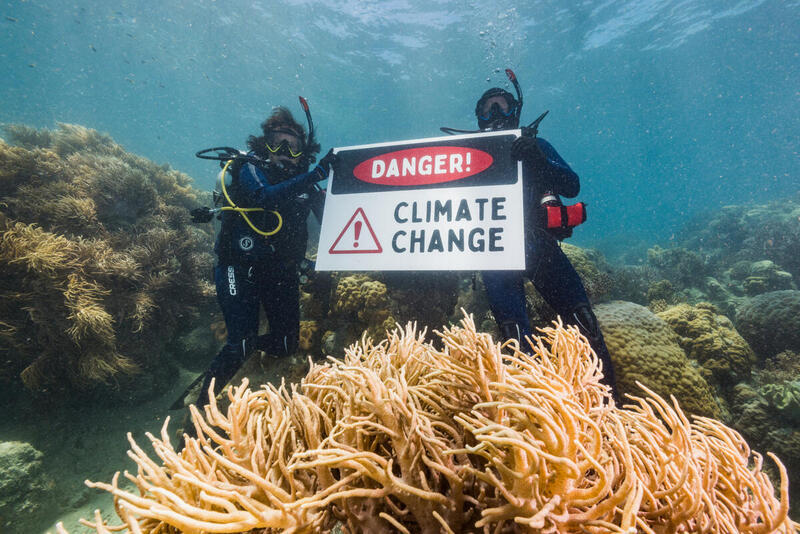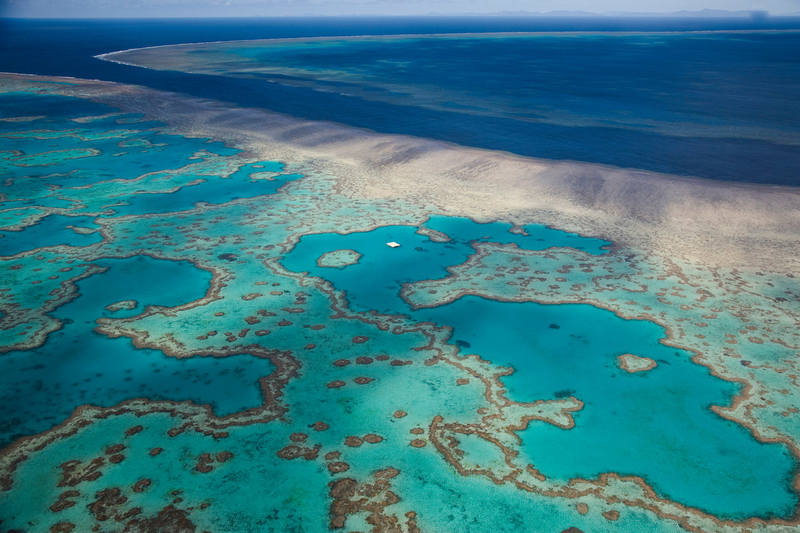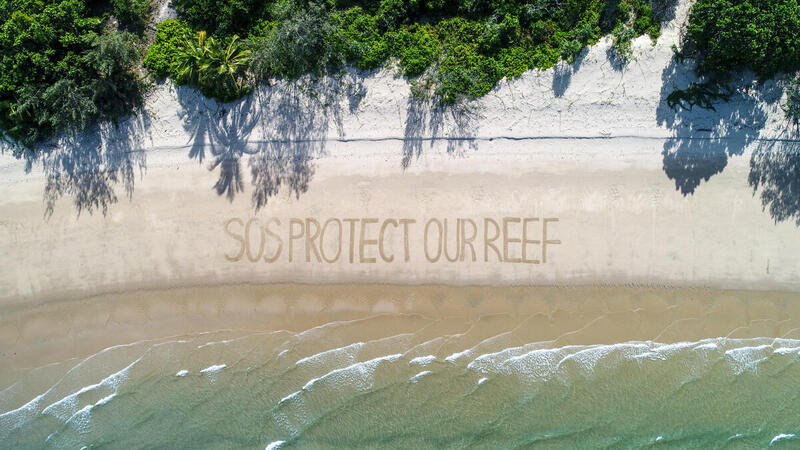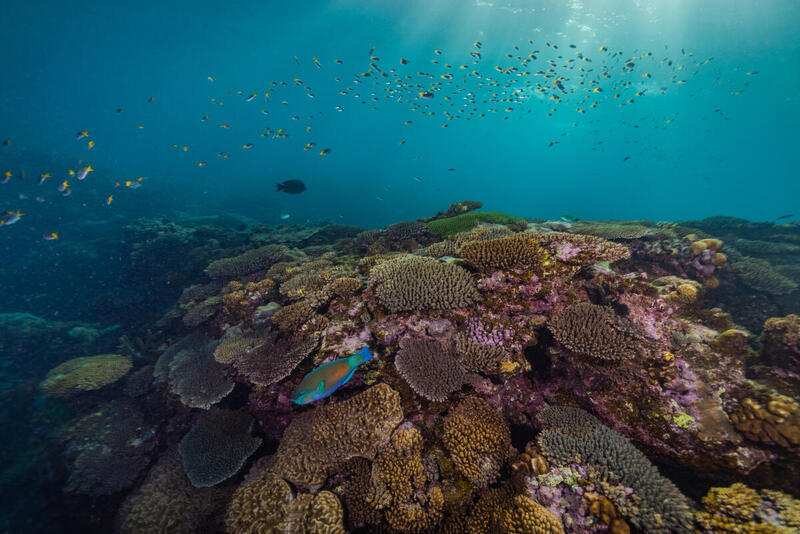Our planet continues to warn us that we cannot continue on our current trajectory. And this year has proven to be no different. From the hottest month on record to what is looking like the hottest year. Moreover, there are some of the biggest environmental red flags of 2023 to remind us why the Great Barrier Reef (as well as many other species and natural environments) should be treated as “in danger”.

We probably don’t need to remind you why the Great Barrier Reef is one of the seven natural wonders of the world. Having been a part of UNESCO’s World Heritage Listings since 1981, and with biodiversity as far as the eye can see (and beyond!), it’s home to 1625 types of fish, 30 species of whales and dolphins, and 600 types of coral, amongst many other species of marine wildlife.

Aerial photograph of the Great Barrier Reef.
Sadly, we also probably don’t need to remind you that over the past 20 years, the world’s largest coral reef system has continued to make headlines for a series of mass coral bleaching events (6 to be precise) across 1998, 2002, 2016, 2017, 2020 and 2022 – driven by the devastating impacts of climate change.
That’s why UNESCO’s draft decision to not declare the Great Barrier Reef as “in danger” ahead of the World Heritage Committee’s final vote in September has come as a disappointing blow to marine scientists and environmental organisations (including yours truly) – especially since we know the recent results from an official UN visit back in 2022 concluded Australia is not doing enough to protect the reef from climate change and more mass bleaching events in the near future.

Greenpeace “Protect the Reef” campaign action in North Queensland.
Our planet continues to urge us to take immediate action against all the climate change driven disasters seen around the world this year. These, amongst many others are signs that our planet is exhibiting some serious red flags that need addressing.
What are some of these environmental red flags?
Our planet continues to warn us that we cannot continue on our current trajectory. And this year has proven to be no different. From the hottest month on record to what’s looking like the hottest year, here are some of the top environmental red flags of 2023 to remind us why the Great Barrier Reef (as well as many other species and natural environments) should be treated as “in danger”:
The hottest month on record
Earlier this year, the World Meteorological Organisation confirmed that July was officially the hottest month on record at a global scale. Global temperatures during the month averaged 16.95C, surpassing the previous record by 0.33C set back in 2019. The devastating effects of extreme heatwaves was widely reported in the Northern Hemisphere, and the Bureau of Meteorology has issued warnings for Australia and what we could expect over the coming months as we move towards our summer season.
The hottest year on record
That brings us to the world’s official hottest year on record. Data from the National Oceanic and Atmospheric Administration have shown more than a 50% chance that 2023 will be the warmest year on record. This of course follows the unprecedented heatwaves across Europe, a rapidly strengthening El Niño weather event, and alarmingly high temperatures across Asia and parts of the Pacific, as well as a number of heartbreaking wildfires reported across Greece and Maui.
Ocean temperatures
Unsurprisingly but equally as concerning, average oceanic temperatures have also been at an all time high (as reported by the Copernicus Climate Change Service), with scientists reporting that the world’s oceans have been running a fever since March this year. But that’s not the only indication of the serious impacts climate change is having on our oceans, with scientists now reporting the colour of our oceans is also even changing more from blue to green.
New fossil fuel developments
A recent report by the Australia Institute has outlined the frighteningly high number of new fossil fuel developments this year – 116 to be exact. And if all these projects were to go ahead as planned, that would add roughly 4.8 billion tonnes of emissions into the atmosphere by 2030.
One new fossil fuel development of course being Woodside’s dangerous plans for the Burrup Hub. The most polluting fossil fuel project currently proposed in Australia, that if completed, would produce climate-wrecking gas until 2070. The project threatens endangered whale and turtle nesting habitat through dangerous dredging and seismic blasting, and another nearby UNESCO protected area – Ningaloo Reef.

Corals and marine wildlife in Ningaloo Reef, Western Australia.
“Projects like the massive Woodside proposal, which would be the largest green house gas emitting project to come forward in Australia, simply cannot go ahead if we are going to be consistent with what is necessary to keep global warming under 1.5°C and give the Great Barrier Reef a fighting chance” as stated by Greenpeace Australia Pacific CEO.
The bottom line: We know that the fossil fuel industry is a major contributor to the climate crisis our planet is currently facing. We know that pollution and climate change (driven by the burning of fossil fuels) has been identified as the number one threat to the Great Barrier Reef. We also know that we cannot afford to further invest in the development of new fossil fuel projects.
What we truly need now more than ever, is strong climate targets that align with the efforts to limit global temperature to increase to 1.5°C – that protect our planet and biodiversity treasures like the Great Barrier Reef.


